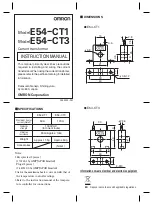
Hampshire Controls Corp.
Revision 1.2
Temperature Transmitter Operating Instruction
Page 5 of 21
©2014
Sensor Probe
The probe supplied with the Temperature Transmitter is a highly accurate temperature sensor.
The sensor may be put in water or other mild aqueous solutions from 0°C to 100°C.
NOTE: Avoid submerging the probe in solvents or harsh chemicals. Use protective thermo-
wells when monitoring such materials.
NOTE: The warranty does NOT cover damage to probes or electronics that is caused by
exceeding temperature limitations, or damage to probes caused by using them in solvents
or other unsuitable environments.
NOTE: If the displayed temperature shows a consistent high (> 100°C) or low (< -100°C) value,
most likely, the probe has failed. The unit must be returned for probe replacement and
recalibration.
Probe Installation
The probe may be used in air or in simulated product.
If installing the sensor in a refrigerator, try to place the probe in a water and glycol chlorine
solution to stop bacteria formation.
If installing the sensor in a cabinet or enclosure (particularly freezers), make sure to use good
techniques to prevent room moisture from getting into the cabinet. Whenever possible, install the
probe through an existing access port provided by the cabinet manufacturer, then reseal the port.
Alternatively, the probe can be run under, over, or through the door-sealing gasket. Often a door
gasket will have a joint at one or more corners. Open that joint slightly by carefully making a slit
with a razor blade. Insert the probe wire and then reseal the joint with flexible silicone sealing
compound. Inside the cabinet, run the probe wire so that it will not become snagged during
loading, unloading or cleaning procedures.
Probe Location
Install the sensor probe in a location where it will respond to the average temperature of the
space being monitored and not to local conditions caused by door openings, etc.
The object of the probe location is to provide some safety for the area being monitored without
generating “false” or nuisance alarms. For example, locating the sensor probe on the bottom of a
chest freezer will result in the alarm being sounded later than if it was located near the top.
However, locating the sensor too close to the top of the chest freezer could result in the alarm
being sounded due to routine lid opening. Choose a probe location that offers the safety desired
for the enclosure contents.







































